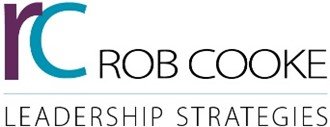
The Future of Leadership Development
Every organization wants to maximize the potential of their leaders in order to achieve superior results and the need for leadership development has never been greater than it is today. This paper outlines some principles for ensuring meaningful and impactful leadership development.
What’s Broken?
In my early days in leadership development, we delivered two-to-three-week off-site in-residence programs for organizational leaders. We delivered great content which included contemporary management processes and theories as well as case studies, simulations, and on-the-job applications. The trouble was that when program participants returned to their real workplace world there was never really much change.
Over the years I have been involved in or observed a multitude of leadership development programs in action. Sadly, most programs just don’t come close to accomplishing what they were designed to do – build better leaders. In many organizations leadership development is nothing more than a series of disconnected programs that are divorced from the current reality of business issues.
Looking Ahead
There is a need for a new-era of leadership development – an era that will enable leaders to more effectively address and capitalize on the challenges of our complex and rapidly changing world. Based on what I have read, seen and heard from my clients I have identified what I believe are essential elements and criteria for today’s leadership development programs.
1. Focused and Relevant Content
There is an important set of foundational leadership models, processes and principles that every leader needs to understand. What makes leaders successful, however, isn’t the understanding of these models, processes and principles it is their practical and simple application. Leadership programs need to tightly align the core foundational leadership models, processes and principles to real workplace issues and challenges.
2. Content Tied Directly to Identified Individual Learning Goals
There is a never-ending list of skills, knowledge and capability that leaders need in order to reach the pinnacle of their game. No leadership program can possibly address all of these elements in an effective way. It is possible, however, to create a program that integrates the set of key competencies of leadership while tailoring components of the program to address the unique development goals of each individual.
The goal of any leadership development program is to change behaviour and the best programs explicitly tailor a “from–to” path for each participant.
3. Pre and Post Performance Measurement
When organizations fail to track and measure changes in leadership performance over time, they increase the odds that improvement initiatives won’t be taken seriously. A 360-degree leadership feedback exercise at the beginning of a program and followed by another one after 6 to 12 months following the program will provide the basis for assessing the magnitude of behavioural change and performance improvement.
4. Real on-the-job application projects
It is well known that once leaders leave a traditional program where they are left to implement new behaviours on their own, most leaders will not change. It has been shown that tying leadership development to real on-the-job projects that have a business impact significantly increases retention, and the business gets immediate benefits. Leadership programs need to provide an environment where leaders are held accountable for implementing new approaches as a part of the program.
5. Peer Accountability
Leadership programs need to build in peer review and peer coaching as core elements for providing support and accountability. In his article ‘Leadership is a Contact Sport’ Marshall Goldsmith states that “A review of leadership development program effectiveness across multiple firms showed time and again that leaders who discussed their own improvement priorities with their co-workers and who regularly followed up with them showed the most improvement.” Left to implement new behaviours on their own without engagement from others, most leaders and employees will not change.
6. Time to Get Uncomfortable
Leadership programs needs to take people out of their comfort zone and turn up the heat through self- analysis of assumptions and beliefs. Most leadership and team development approaches focus on skills and behaviour but do not go below the surface to explore what drives behaviour and what leaders need and feel during the development process. It is when a leader understands their personal motivators and orientations that the opportunity for real change occurs. Leadership programs need to provide the opportunity for leaders to explore and understand the link between these elements and their personal behaviour.
Becoming a more effective leader often requires changing behavior but if there isn’t a significant degree of discomfort, the chances are that the behavior won’t change. Leaders who have the courage to stretch themselves should feel some discomfort as they struggle to reach new levels. During leadership development programs participants need to be given the opportunity to step into real situations they find.
7. Mixed Development Techniques
The integration of personal leadership assessments facilitated sessions, one-on-one-leadership coaching, peer coaching, simulations, live application projects, sharing of personal challenges and issues, etc. provide the most effective and meaningful environment for development.
8. One-Day Sessions over a Year Period
It is not ideal to take leaders out of their organizations for extended periods of time. After being away on extended development programs leaders typically return to work with a backlog of priorities to address and the high of the learning experience fades away in a frustratingly short time. Taking leaders away from their workplace for multiple one-day sessions with up to six weeks between sessions accomplishes a number of key things:
The leader is less stressed since they know they are only away for one day.
The four-to-six-week periods between sessions provides the leader with the opportunity to immediately apply what has been learned
During subsequent sessions the leader receives support and coaching from peers related to their transfer of the learning to the job
Each session provides a unique learning environment and new content
The leader develops a true peer network that remains in place long after the program is over
References:
Why Leadership Development Fails. Gurdjian & Halbeisen, McKinsey Quarterly, January 2014
Why Leadership and Team Development Programs Fail, Anne Dranitsaris and Heather Hilliard, The Human Resource Executive, March 2014
The #1 Reason Leadership Development Fails, Mike Myatt, Forbes Magazine, December 2012
Why Leadership Development Efforts Fail, MIT Sloan Review, April 2003
Why So Many Leadership Programs Ultimately Fail, Peter Bregman
About the Author: Rob Cooke is a leadership advisor, strategist and coach. Drawing on a strong background in business and organizational development, Rob utilizes his extensive consulting experience to help leaders address emerging challenges, seize opportunities and execute approaches to achieve personal, leadership and business goals.
June 15, 2017 | Leadership Development
